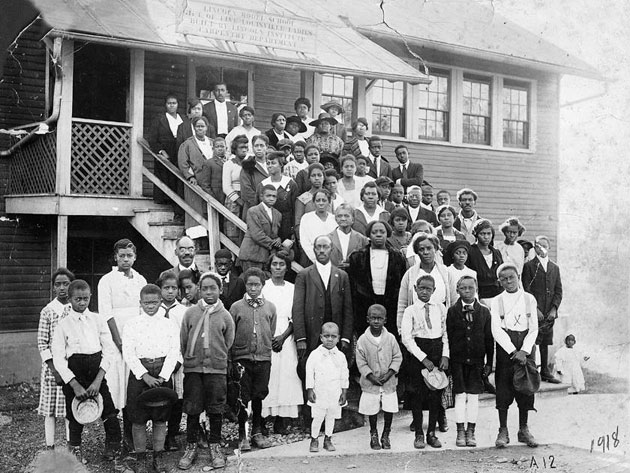
Racially segregated public schools became law in Kentucky in 1866.
But with the passage of the Day Law in 1904, a piece of legislation
which still bears the name of Carl Day, the representative from
Breathitt County who introduced the bill, the color bar was extended
to private schools. As a result, black students were immediately
exiled from Berea College, and the stage was set for what became
the Lincoln Institute -- "the second Berea" -- in October, 1912. In the eyes of many, however, Lincoln was "half-a-loaf" at
best; it was separate, but hardly equal. Berea's reformist, path-breaking
answer to the question of who should study at the college was mirrored in an equally path-breaking answer to the question of what should be studied and how. In other words, the social inclusiveness which made 19th century Berea unusual -- here was a student body that was co-educational, and, after 1866, bi-racial -- was paralleled by an equally inclusive curricular outlook, one in which the liberal arts were respected, but augmented by manual labor. At Berea, like Oberlin or the Oneida Institute in New York, the hope was that the principles of science together with some practical training in the agriculture and mechanical arts would reunite the head and the hand -- the thinking and acting parts of the self -- which the classical curriculum had arbitrarily divided. Lincoln, by contrast, was not only racially segrated, but offered no opportunities to earn a bachelor's degree; a six-year course for teachers, the equivalent of two year's beyond the high school, was the best that could be hoped for. At Lincoln, moreover, the spirit of industrial or trade training had narrowed considerably. No longer supplementing the liberal arts, vocational education became the substitute for the liberal arts.
On Berea and the Day Law, see Shannon H. Wilson, Berea
College: An Illustrated History (University Press of
Kentucky, 2006). For a more comprehensive state-wide view, including
the campaign to establish Lincoln Institute and the political aftermath,
see John A. Hardin, Fifty
Years of Segregation: Black Higher Education in Kentucky, 1904-1954 (University
Press of Kentucky, 1997).
Wider but complimentary interpretations of
the struggles over race and opportunity can
be found in
in James D. Anderson, The
Education of Blacks in the South, 1860-1935 (University
of North Carolina Press, 1988), Heather Andrea Williams, Self-Taught:
African American Education in Slavery and Freedom (North
Carolina, 2005) and Adam Fairclough, A Class of Their Own:
Black Teachers in the Segregated South (Harvard, 2007).
For a more general account of the rising tide of "education for social efficiency" and
its far-reaching consequences in the years surrounding World War
I, see Herbert M. Kliebard, The Struggle for the American Curriculum, 1893-1958 (Routeledge and Kegan Paul, 1987).